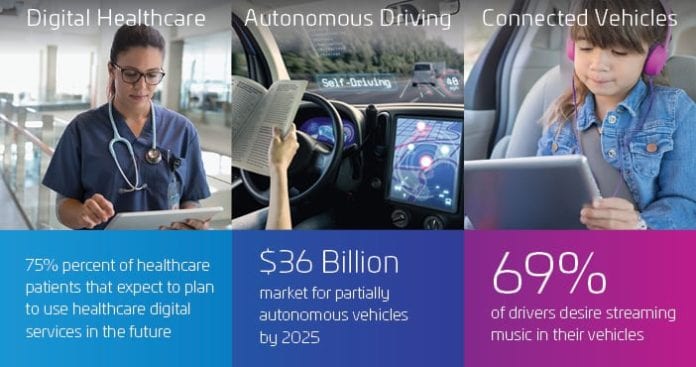Fifth-generation (5G) cellular technology is making the transition from general idea to network implementation. In addition to faster downloads and lower latencies, 5G will support smart devices, including self-driving cars and wearables, telemedicine and the internet of things (IOT).
Rising data demand will continue to drive 5G requirements. CommScope believes 5G will be a “network of networks” – a convergence of wireline and wireless, with deep fiber penetration in both to support next-generation infrastructure. As a result, standardization will encompass all aspects of 5G, including network hardware and interfaces.
In the previous cellular-network cycles (2G, 3G, and 4G), operators and networks were relatively limited by a select group of large vendors. The Open RAN initiative promoted by the ORAN Alliance effectively levels the playing field for 5G network-equipment vendors. In general, the Open RAN concept is about standardizing network interfaces so that carriers can deploy the best and most innovative solutions in their networks.
“CommScope supports the Open RAN vision for 5G and is already incorporating it into product designs,” says Ben Cardwell, senior vice president and segment leader of CommScope Mobility Solutions. “We recently introduced a fixed wireless antenna for millimeter-wave frequencies, one of the first 5G applications being deployed now.”

The antenna is designed to deliver gigabit-per-second broadband directly to homes, effectively replacing the physical wires that traditionally have been used to relay broadband internet service.
“Open RAN enables organizations of all sizes to develop pioneering solutions that more quickly and robustly deliver all that 5G has to offer: high speed, superior reliability, extreme bandwidth capacity, and ultralow latencies,” Cardwell says. “With Open RAN, it becomes that much easier to put up more radio points. It’s a less-expensive solution for network operators to cover all the various demands across a particular geographic region.”
CommScope has been a technology-agnostic supplier in every previous generation of wireless networks. A key challenge for 5G has been allocating sufficient radio spectrum to meet demand. The Citizen’s Broadband Radio Service (CBRS) initiative in the U.S. will broaden access for new 5G services by implementing Dynamic Spectrum Allocation technology in the world for the first time. CommScope’s Environmental Sensing Capability (ESC) Spectrum Access System (SAS) will help operators prepare for and use CBRS.
Infrastructure is key to ensuring 5G coverage is expansive, efficient and consistent. Next-generation wireless networks require more infrastructure, such as small cells placed both indoors and out that transmit millimeter waves, which travel short distances.
“Opening the traditional demarcation points of the network enables networks to be much more flexible and drive innovation faster,” says Cardwell. “All the investments we’re making at CommScope today – in advanced antenna technology, small-cell solutions, spectrum management, and more – are really creating the foundation on which to build 5G.”
About CommScope
CommScope pushes the boundaries of communications technology with game-changing ideas and ground-breaking discoveries that spark profound human achievement. We collaborate with our customers and partners to design, create and build the world’s most advanced networks. It is our passion and commitment to identify the next opportunity and realize a better tomorrow. Discover more at commscope.com

